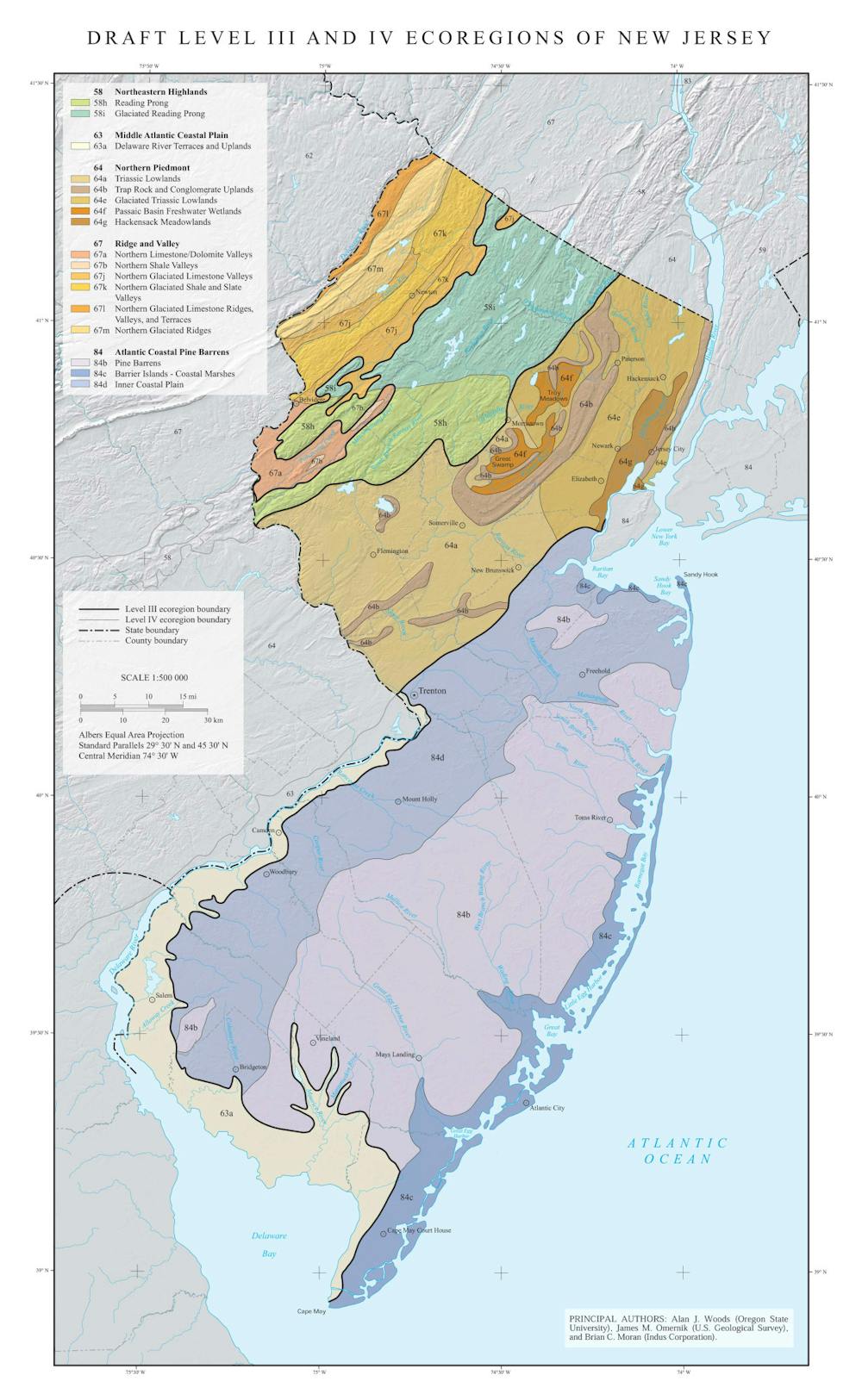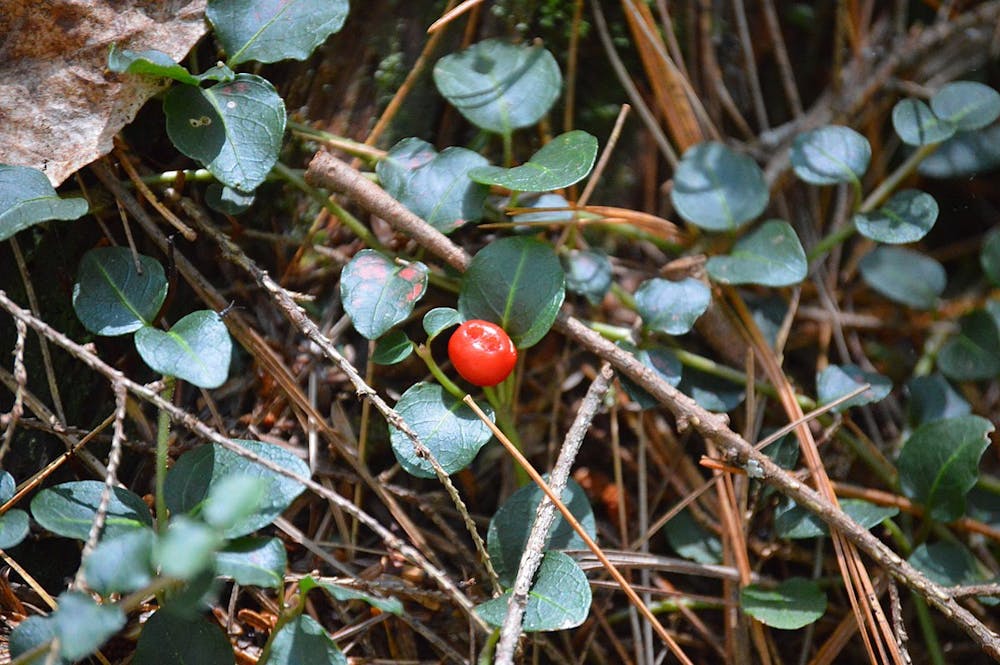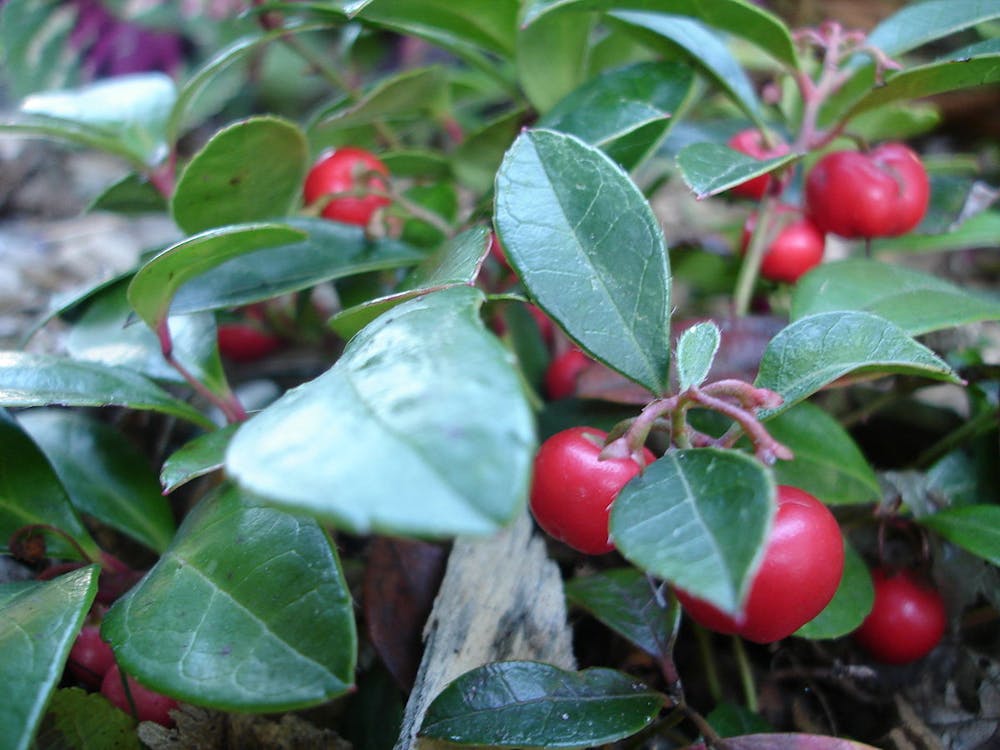By Mike Sherr
Editor-in-Chief
The eastern teaberry (Gaultheria procumbens), also known as wintergreen, are small low-lying shrubs that give forest floors a Chritsmas like appearance. While the rest of the plant looks nothing like creeping parasitic mistletoe (Viscum cruciatum), the red berries of the teaberry shrub can easily remind hikers of the holiday decorations.
Eastern teaberries can mostly be found in the Pine Barrens or in coastal forests in South Jersey. It can also be found across eastern North America in both the Northern Forests and Eastern Temperate Forests ecoregions.
An ecoregion is a broad classification of an area that has similar environments, environmental resources and environmental quality. There are 15 Level I ecoregions that make up the broadest classification of environments in North America. The classification of each ecoregion becomes more specific as the levels increase: in North America alone there are 50 Level II ecoregions, 182 Level III ecoregions and 967 Level IV ecoregions.

A map of New Jersey's Level III and IV ecoregions (Photo courtesy of the Environmental Protection Agency and the U.S. Geological Survey).
New Jersey is home to five Level III ecoregions and 17 Level IV ecoregions. The mountainous part of northern New Jersey that includes the edge of the Appalachian Mountain Range is a part of the Northern Piedmont, Northeastern Highlands, and Ridge and Valley Level III ecoregions. The southern half of New Jersey is mostly a part of the Atlantic Coastal Pine Barrens ecoregion but also includes a sliver of the Middle Atlantic Coastal Plain along the Delaware River.
The Atlantic Coastal Pine Barrens ecoregion, which is where eastern teaberries mostly thrive in New Jersey, can only be found in southern New Jersey, Long Island and Cape Cod. This area once covered much of the east coast from Nova Scotia to North Carolina, but as climates changed, these ecosystems adapted and changed into new ecoregions.
The soil in the Atlantic Coastal Pine Barrens is very dry and acidic which is perfect for eastern teaberries to grow and reproduce in.
Eastern teaberries start to bloom white flowers in the early summer which soon turn into red berries that can last into the winter. There tends to be only three to four berries per bush as the plant itself is quite small.
When harvested, these berries should be eaten quickly as once they dry out they start to lose their flavor. Teaberries hold a significant amount of methyl salicylate which gives the berries their minty flavor. If you were to try to dry the berries in order to store them, the methyl salicylate would dissipate and dampen the flavor to make them bitter.

The toxic partridgeberry plant which looks similar to and grows near eastern teaberries (Photo courtesy of Wikimedia Commons / "Mitchella repens Partridge berry Norfolk Connecticut 05112019" by Sesamehoneytart. CC BY-SA 4.0. May 11, 2019).
Teaberries are extremely minty, leading to foragers and cooks to use them very sparingly. While some foragers do swallow one or two while on a hike for a minty treat, others collect a handful to add to muffins or to top a stack of pancakes. Harvesters can of course make jellies and jams from these small berries, but more adventurous cooks can use them to make a mint chocolate chip ice cream or even meringues.
The leaves of the eastern teaberry are even more interesting as they can be used to create wintergreen oil. Wintergreen oil can be used as a mild painkiller and can even be used as an antiseptic for small cuts.
While you should always look out for this plant on a winter hike, watch out for the toxic partridgeberry (Mitchella repens) that looks extremely similar and lives in the same habitat as the eastern teaberry.




